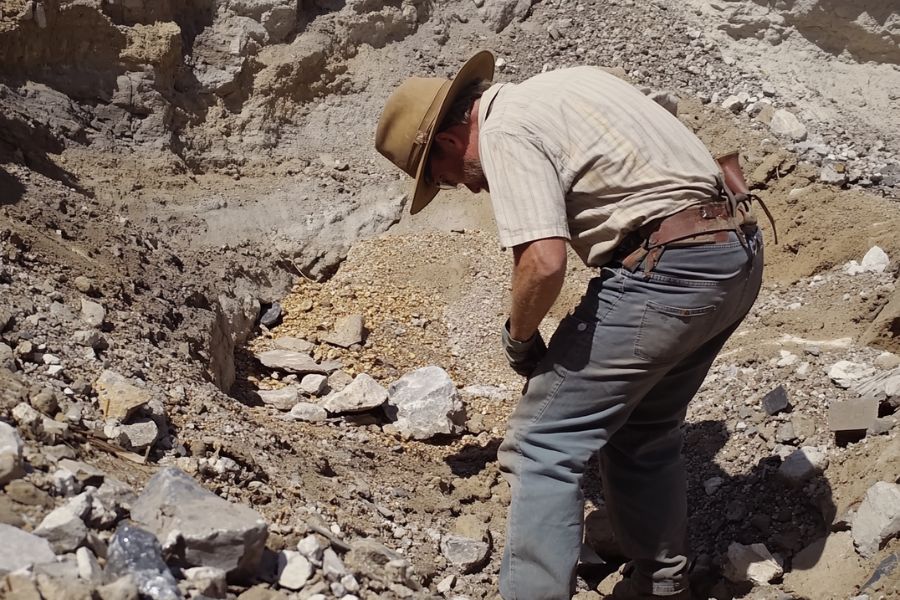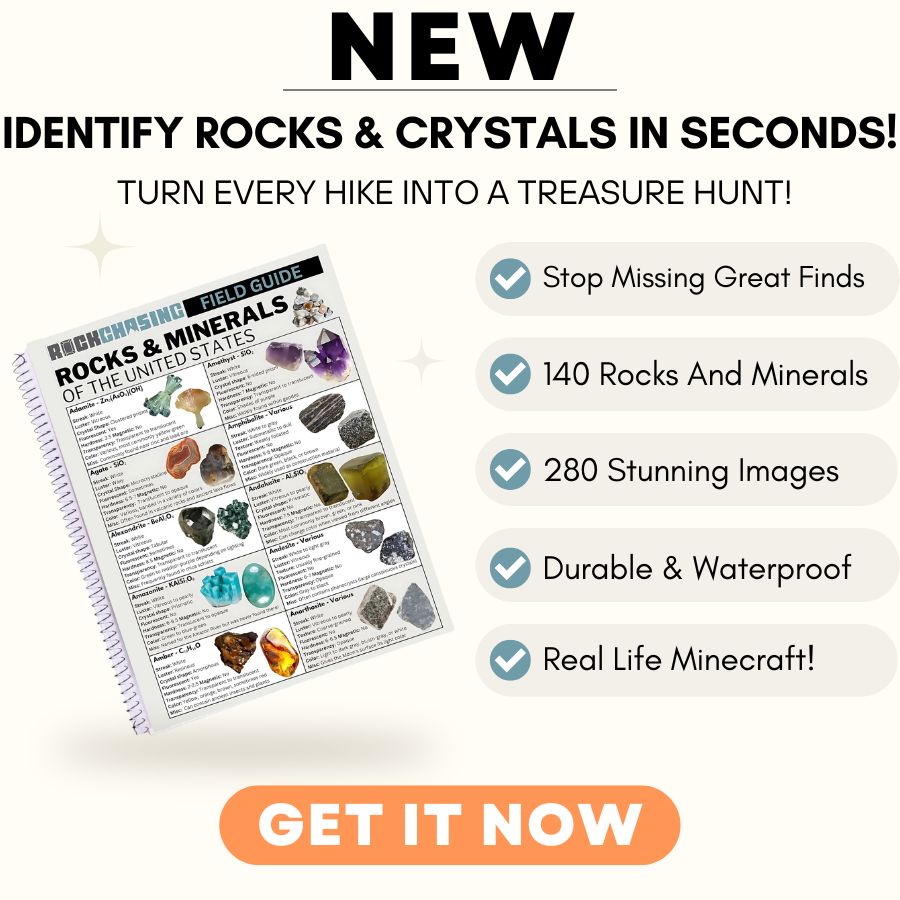From the Tennessee border in the north to the Florida Panhandle in the south, and from Georgia in the east to Mississippi in the west, Alabama is a treasure trove for rock enthusiasts.
Many gem hunters dream of finding tourmaline but struggle to locate prime spots. The search can be frustrating and time-consuming. Don’t worry – we’ve got you covered.
We’ll reveal the best places to find tourmaline in Alabama. We’ve done the research and consulted local experts to bring you the most promising locations.
Save time and energy by focusing your efforts on these hotspots. Get ready to uncover Alabama’s hidden tourmaline gems!
How Tourmaline Forms Here
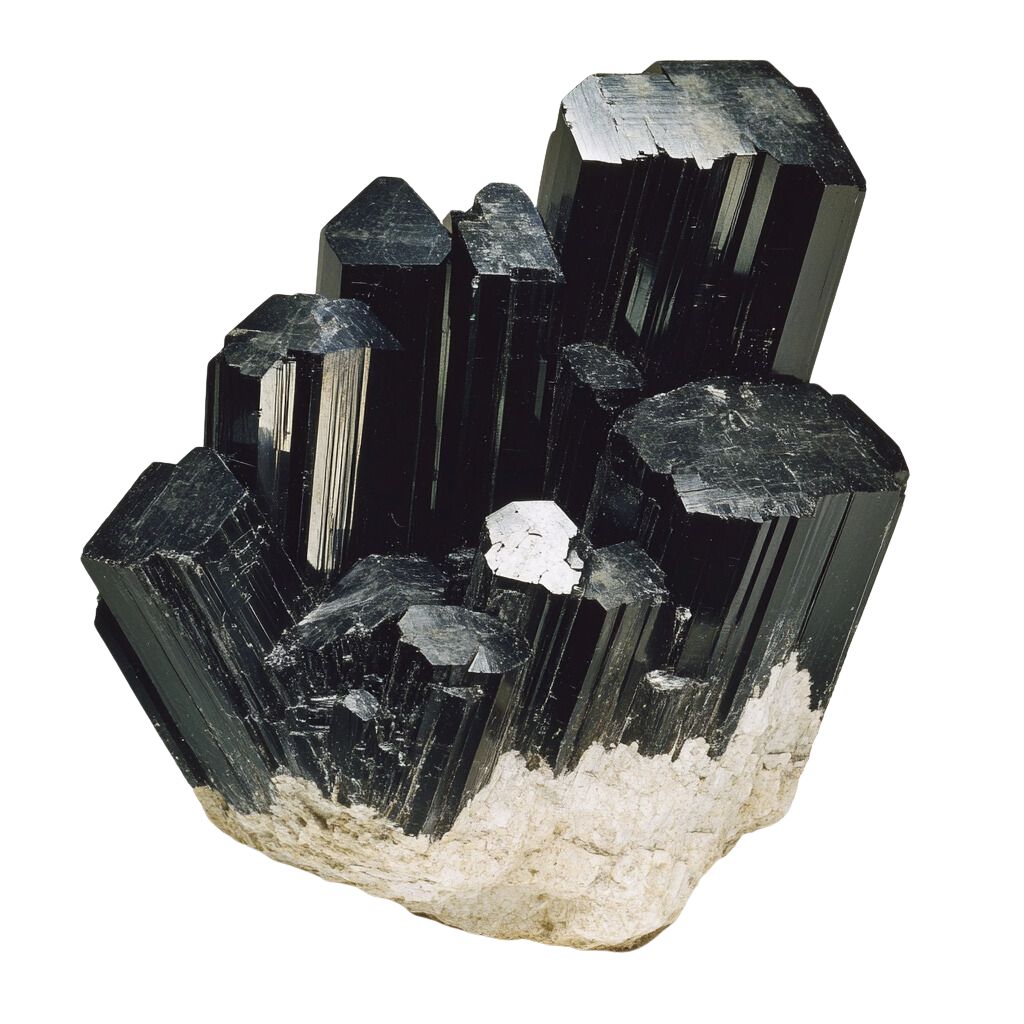
Tourmaline forms deep underground through intense heat and pressure. It originates from hot, mineral-rich fluids that move through fractures in rocks like granite and pegmatite. As these fluids cool, the minerals within them start to crystallize, forming tourmaline.
The color of tourmaline depends on the specific minerals involved, leading to a wide range of hues including pink, red, green, and blue.
Over millions of years, these crystals grow and become the beautiful, multifaceted stones we see today. Tourmaline is prized for its variety of colors and is often used in jewelry and decorative items.
The Types Of Tourmaline
Several incredible types of Tourmaline can be found in the US as well as in our state. Each is uniquely beautiful and interesting including:
Elbaite
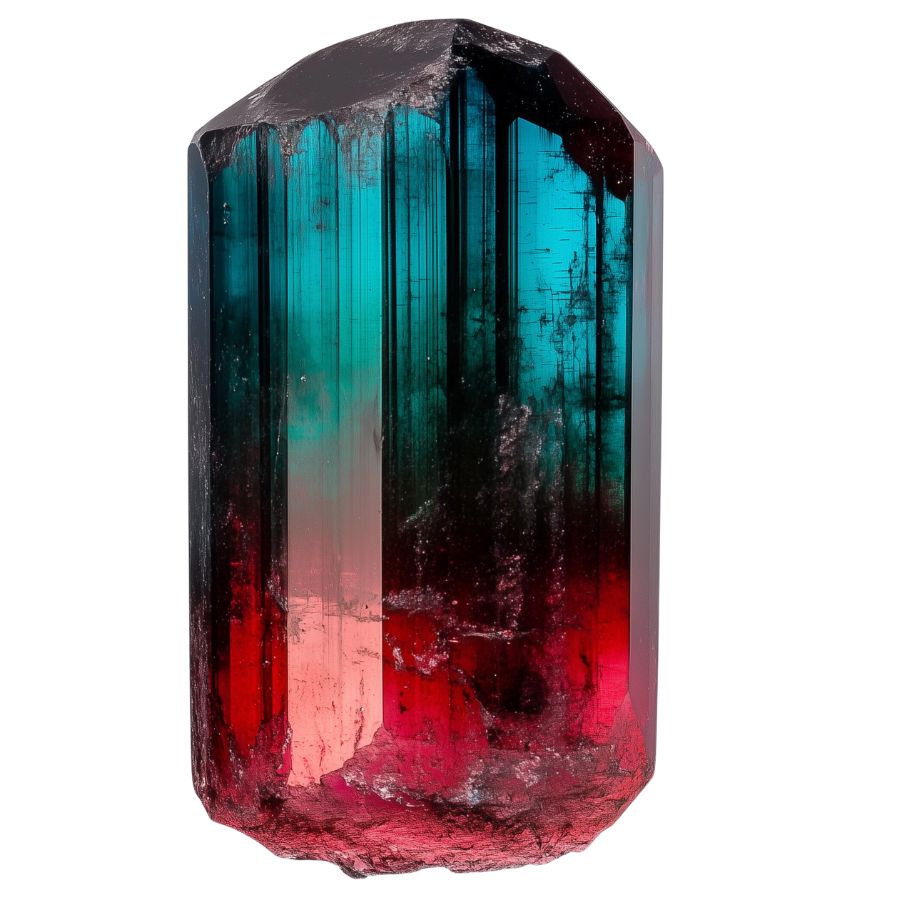
Elbaite is found in pink, red, green, blue, yellow, and even colorless forms. What makes elbaite special is its ability to show multiple colors in a single crystal, like the famous “watermelon” tourmaline with pink and green hues.
This gem stands out due to its complex chemical makeup, which includes lithium, sodium, and aluminum. This composition gives Elbaite its diverse color range and dichroism, allowing it to display different colors when viewed from different angles.
Elbaite has a unique place in history as the first tourmaline variety in which lithium was discovered back in 1818. Some rare types, like the neon blue Paraiba elbaite, are highly sought after by collectors and jewelers.
Schorl
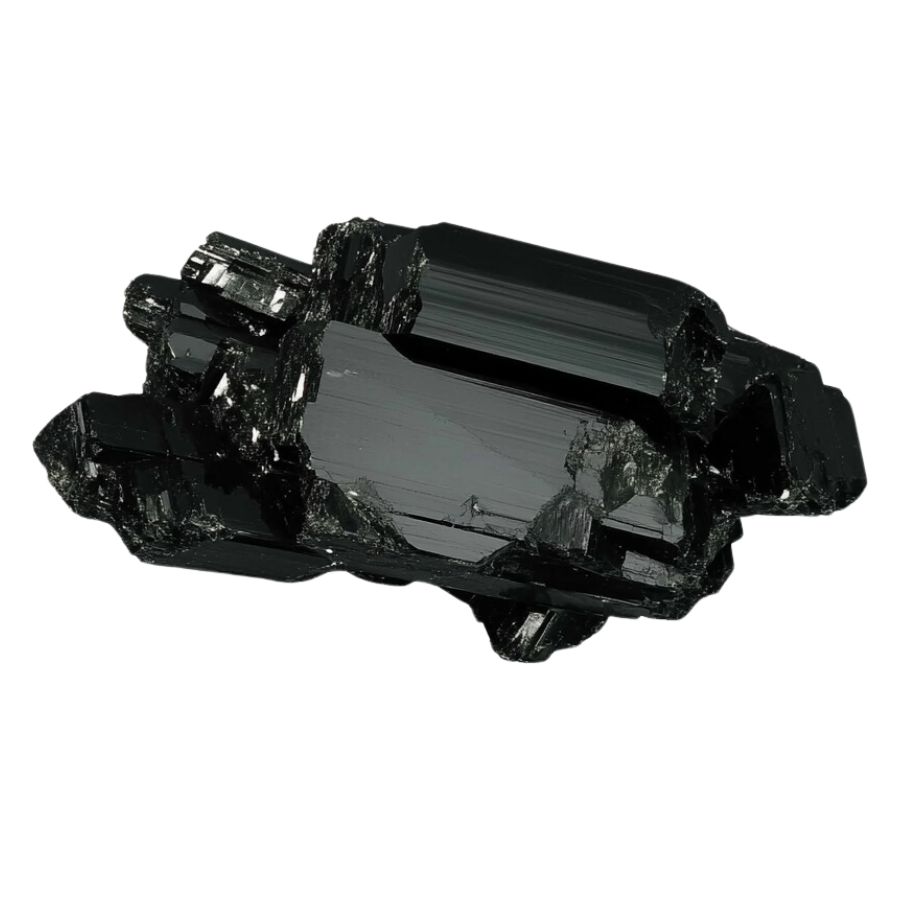
Schorl is known for its deep, rich color. It typically forms long, prismatic crystals with a shiny, glass-like surface when polished. Unlike other tourmalines, schorl gets its distinctive black color from high iron concentrations.
One of Schorl’s most fascinating features is its ability to become electrically charged through heating or rubbing. When charged, it can attract or repel small particles.
This unique electrical property makes Schorl valuable in various industries. It’s used in electronics and manufacturing to control static electricity and electromagnetic interference.
Despite being less colorful than other tourmalines, schorl’s practical applications make it an important and interesting variety.
Rubellite
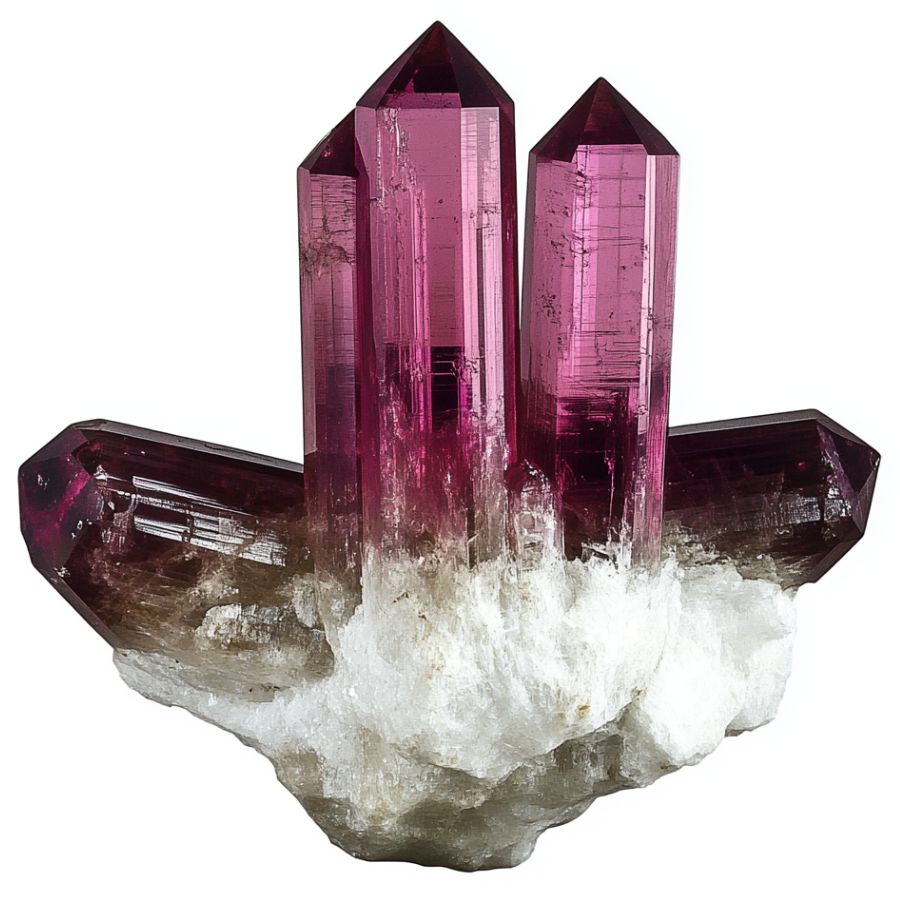
Rubellite stands out with its vibrant pink to red colors. The most prized ones show a pure, saturated red without any brown or orange hints. This beautiful color comes from manganese in its makeup.
One cool thing about rubellite is its double refraction. It can look like it has two different colors when you view it from different angles.
Dravite
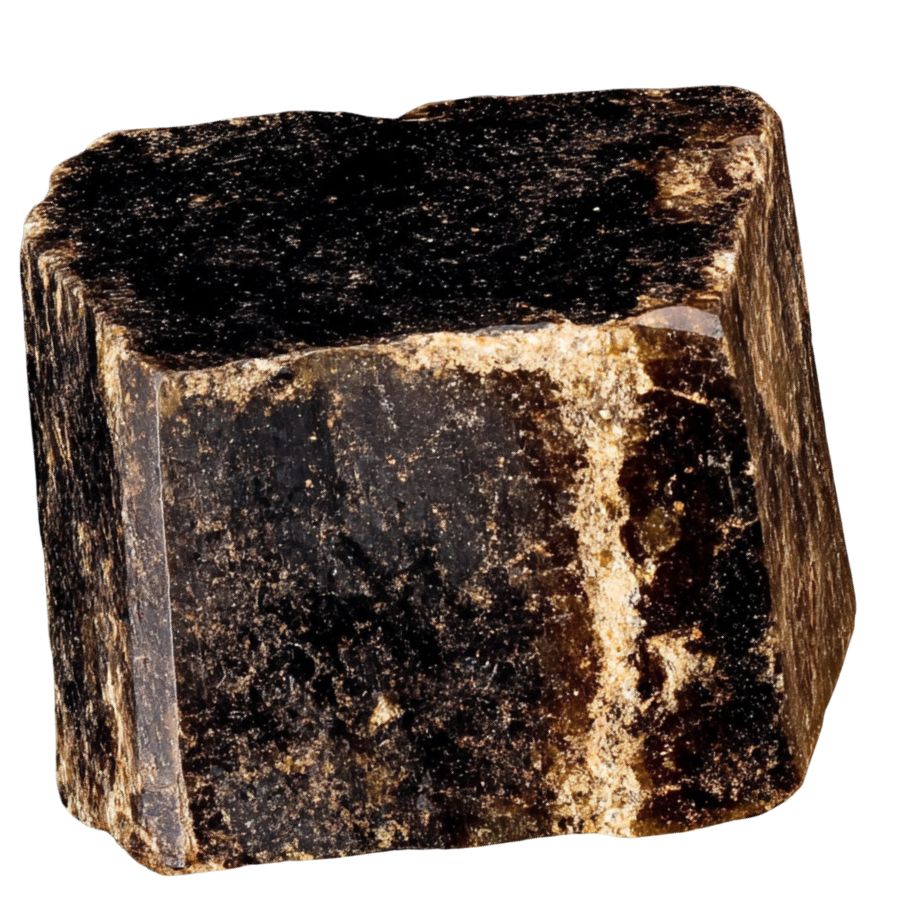
Dravite, or Brown Tourmaline, comes in shades from dark brown to light brown-yellow. It can look a bit like Smoky Quartz, with a semi-see-through quality.
Its crystals are often needle-like or prismatic, with points at both ends. This sets it apart from other tourmalines like the darker schorl or the colorful elbaite.
What makes dravite special is its rich sodium and magnesium content. This sets it apart from other tourmalines. It was first discovered in 1883 and named after the Drava River in Slovenia.
Indicolite
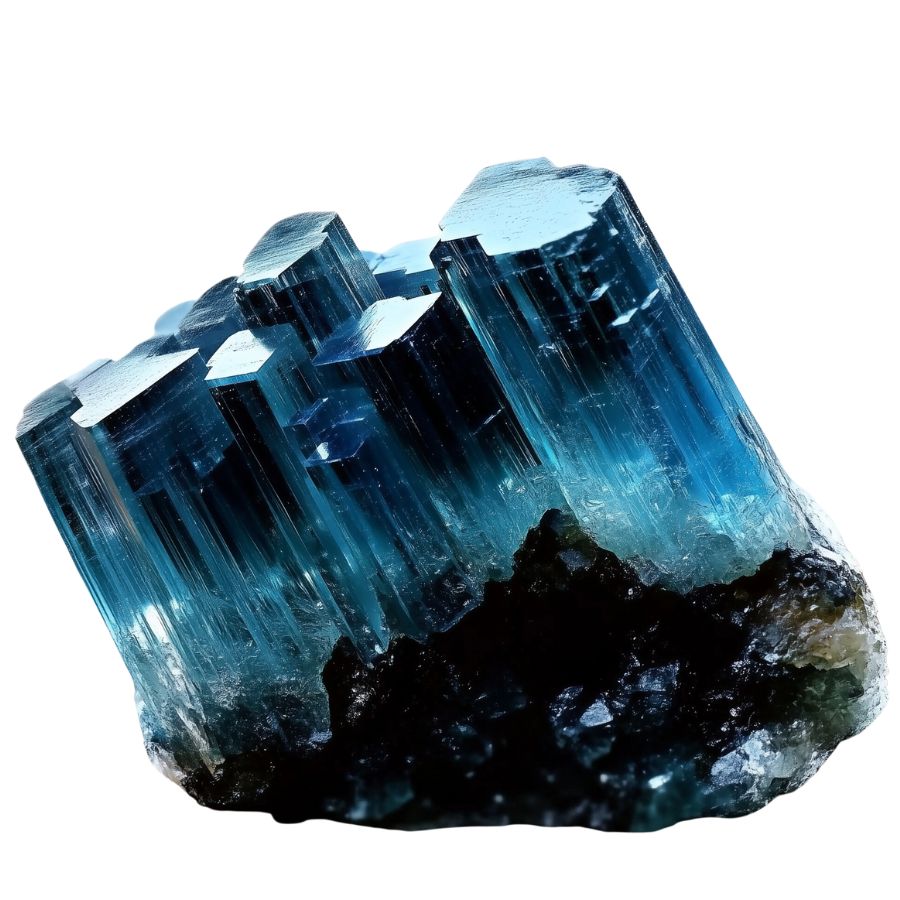
Indicolite is a rare and captivating blue to blue-green stone. It’s prized for its pure, bright blue color, which is considered the rarest within the tourmaline family. The hues can range from light blue-green to deep, rich blue, often with high clarity.
What sets Indicolite apart is its unique optical effects. It shows pleochroism, appearing to change color when viewed from different angles. Some specimens also display chatoyancy, creating a “cat’s eye” effect when cut in a certain way.
Indicolite is sometimes called “Brazilian sapphire” due to its resemblance to the precious gem. However, they’re different minerals.
The increasing demand for blue tourmalines has made indicolite highly sought-after in the gemstone market, appreciated for its beauty and rarity.
Watermelon Tourmaline
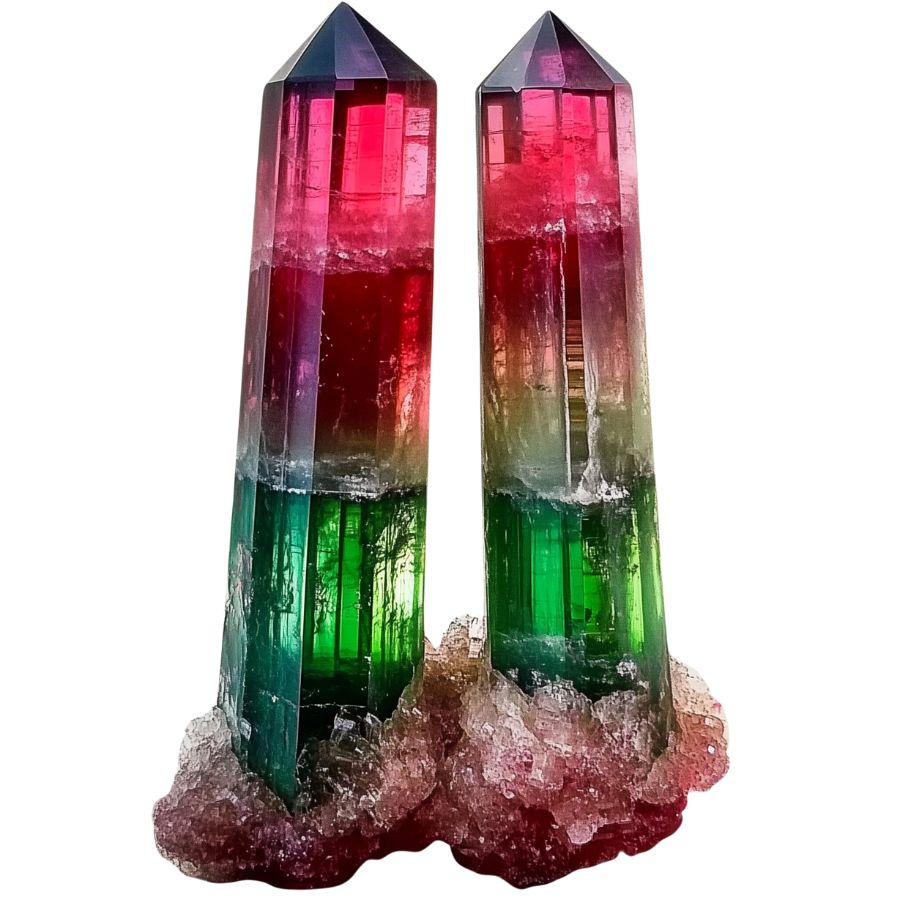
Watermelon tourmaline is truly one-of-a-kind. It looks just like a slice of watermelon, with a pink or red center and a green outer layer. This unique look happens because different elements join the crystal at different times as it grows.
These crystals often form in a rounded triangle shape. They’re see-through to somewhat clear and have a glass-like shine. When cut into slices, they really do look like little watermelons!
Cat’s Eye Tourmaline
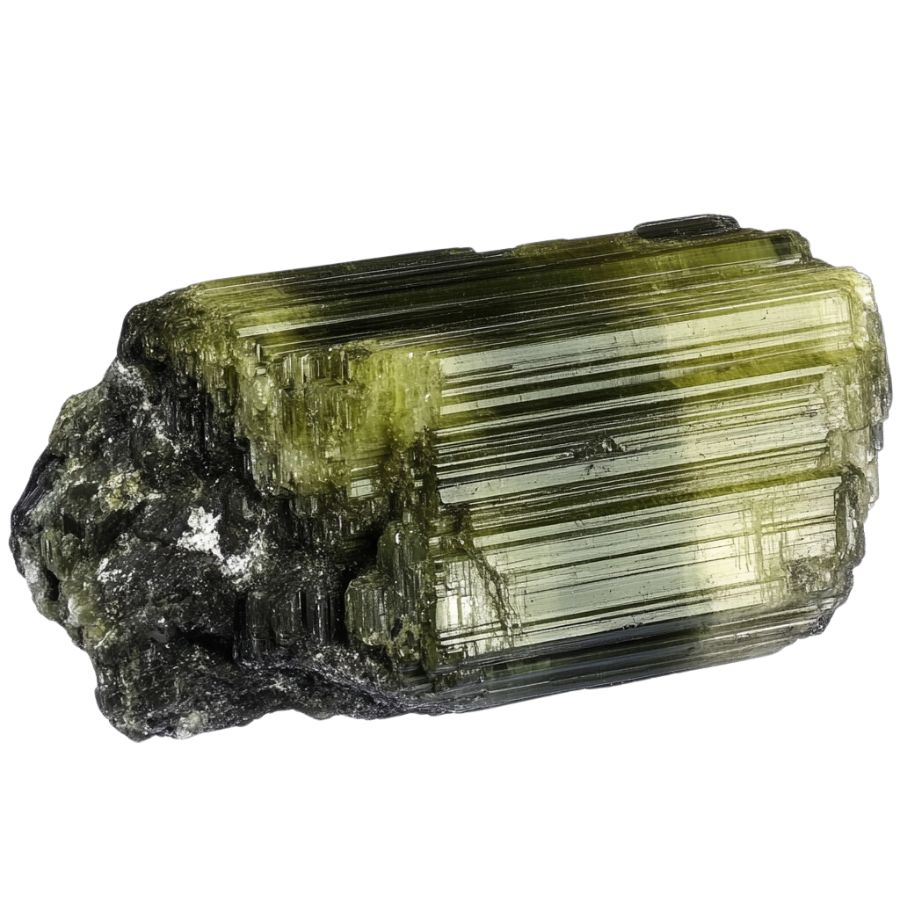
Cat’s eye tourmaline is known for its mesmerizing chatoyancy effect. This creates a bright band across the stone’s surface, resembling a cat’s eye.
This stone comes in various colors, from green to pink to brown, and is usually semi-translucent to opaque.
What makes this stone special is the perfect alignment of tiny, needle-like inclusions inside it. These scatter light in a unique way, creating that eye-catching effect. It’s quite different from other tourmalines that don’t have this feature.
Unlike other cat’s eye stones, Tourmaline offers a wider range of colors and is often more affordable.
Achroite
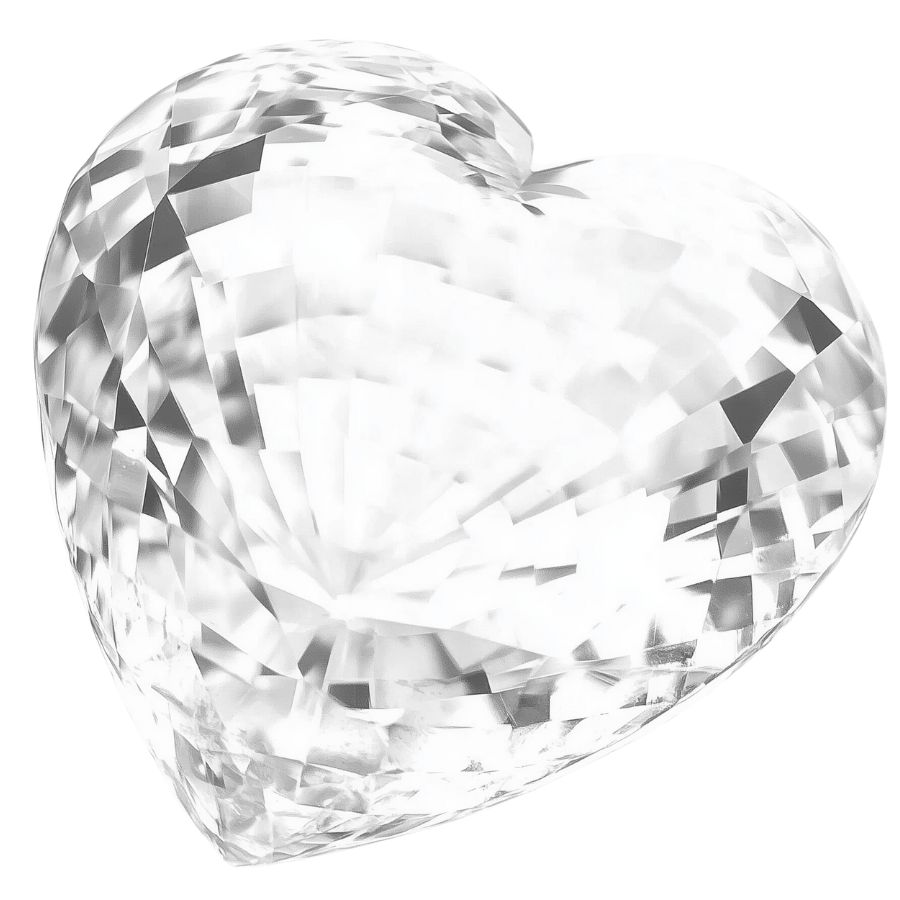
Achroite is a rare, colorless variety of tourmaline that looks like a drop of clear water turned to stone. It’s completely transparent, making it unique among tourmalines which usually have color. The name comes from Greek, meaning “without color.”
What’s special about achroite is that it doesn’t change color when viewed from different angles. It means the stone can be cut in many ways without losing its clarity.
Verdelite
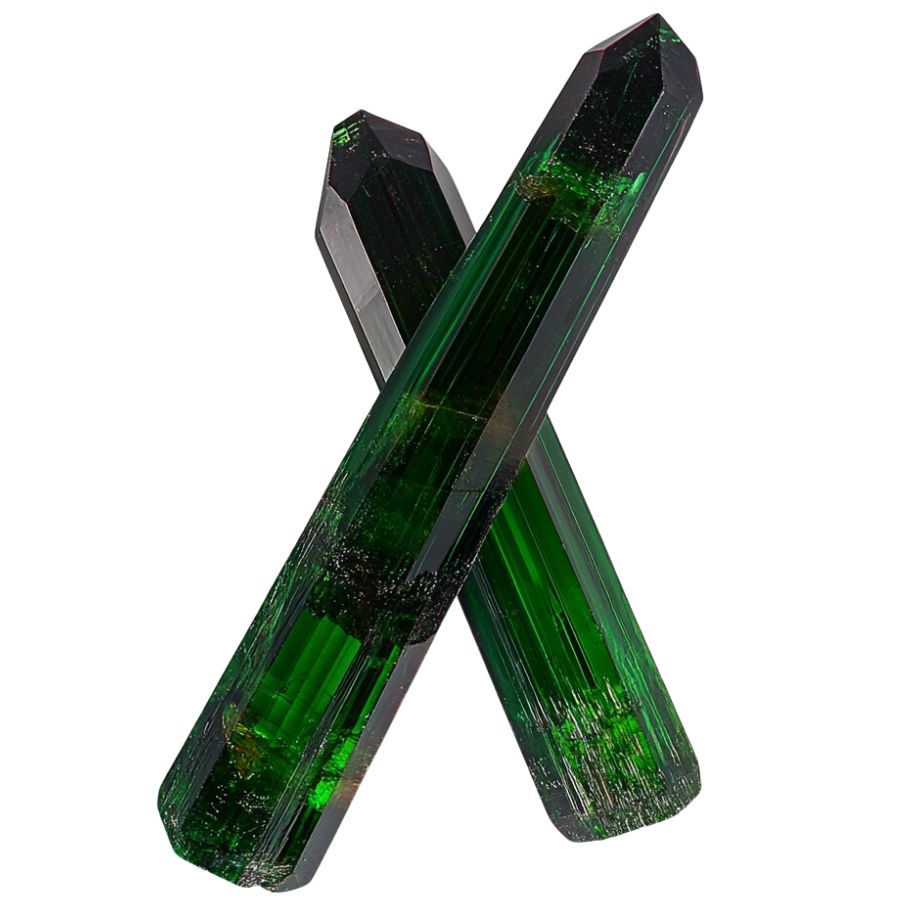
Verdelite is known for its beautiful green color. It can range from light green to deep emerald.
One thing that makes verdelite special is that you can find big, clear crystals of it. This isn’t always easy with other gemstones.
People love using verdelite in jewelry because its rich color and interesting light effects make it a popular choice for all kinds of accessories. Each piece of verdelite is like a little piece of nature you can wear.
Paraíba Tourmaline
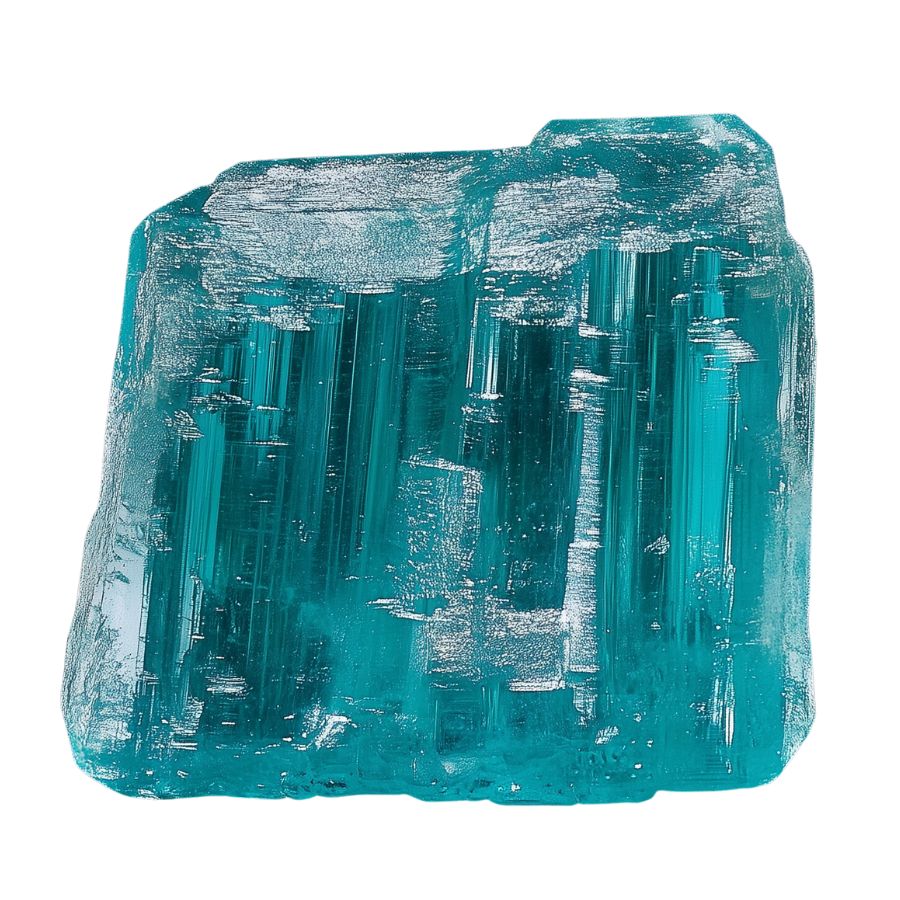
Paraíba Tourmaline is a rare gemstone that catches the eye with its vibrant neon blue or green color. It’s like no other tourmaline you’ve seen before. The intense glow comes from copper in the stone, making it stand out from its cousins.
This stone is one of the rarest. For every 10,000 diamonds mined, only one Paraíba tourmaline is found.
It was only discovered in the late 1980s, making it a newcomer in the gem world. But Paraíba tourmaline’s unique color and rarity quickly made it a favorite among gem lovers.
Its discovery caused quite a stir in the gem community. Even small stones can be valuable because of how rare and beautiful they are.
What Rough Tourmaline Looks Like
When you’re out looking for rough Tourmaline on your own it’s important to know what you’re looking for. But before we dive into specifically what to look for you need to make sure you understand the type of rocks and minerals you’re seeing.
DON'T MISS OUT ON ANY GREAT FINDS!
While you're out searching for Tourmaline you're going to find A LOT of other interesting rocks and minerals along the way. The last thing you want to do is toss out something really interesting or valuable. It can be easy to misidentify things without a little guidance.
We've put together a fantastic field guide that makes identifying 140 of the most interesting and valuable rocks and minerals you will find REALLY EASY. It's simple to use, really durable, and will allow you to identify just about any rock and mineral you come across. Make sure you bring it along on your hunt!
Now, back to the identification specifics:
Here are some tips to help you recognize rough tourmaline.
Look for Color Variations
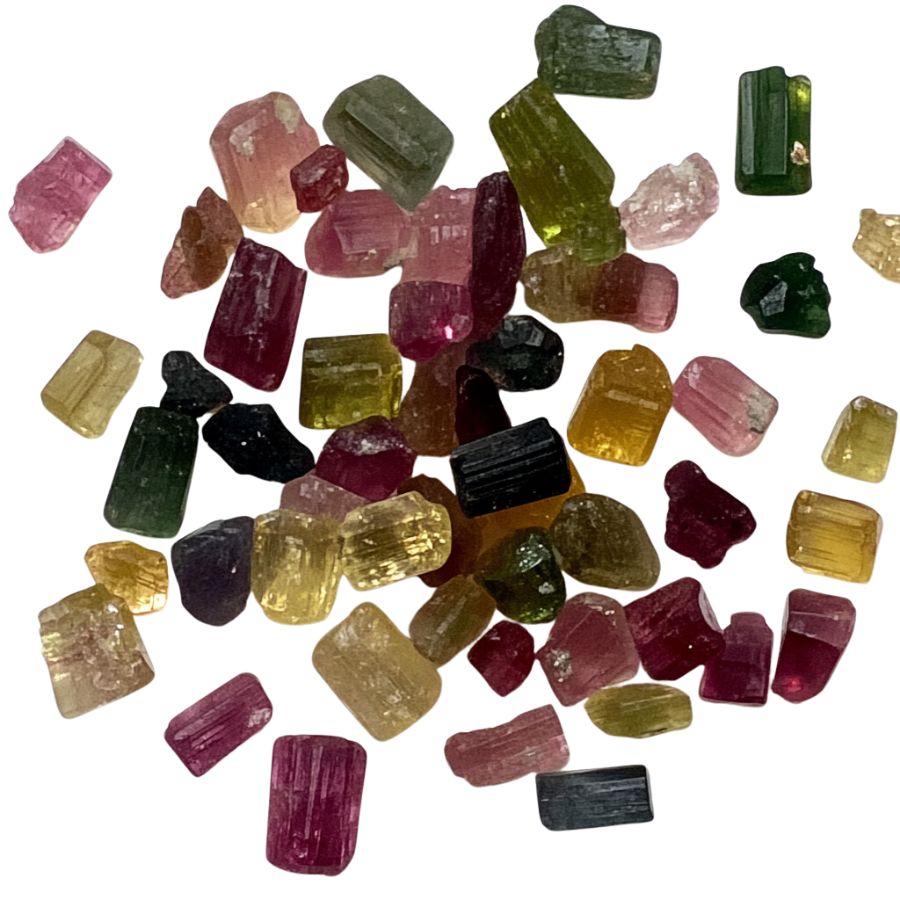
Tourmaline comes in many colors, like pink, green, blue, and even black. Some pieces have multiple colors, like watermelon tourmaline, which is pink and green.
If you see these color mixes, it’s likely tourmaline. Keep an eye out for vibrant shades.
Assess the Density and Weight
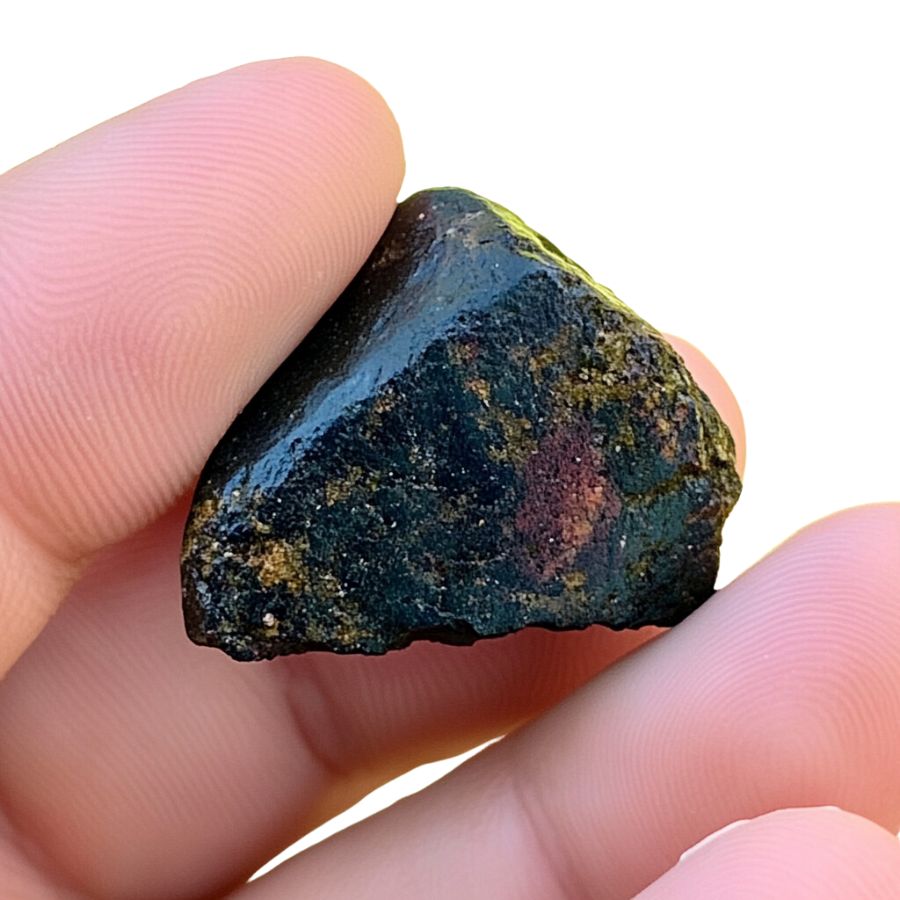
Rough tourmaline is relatively heavy for its size. If you pick up a piece and it feels denser than expected, it could be tourmaline. This weight can help you confirm your find.
Examine the Crystal Structure
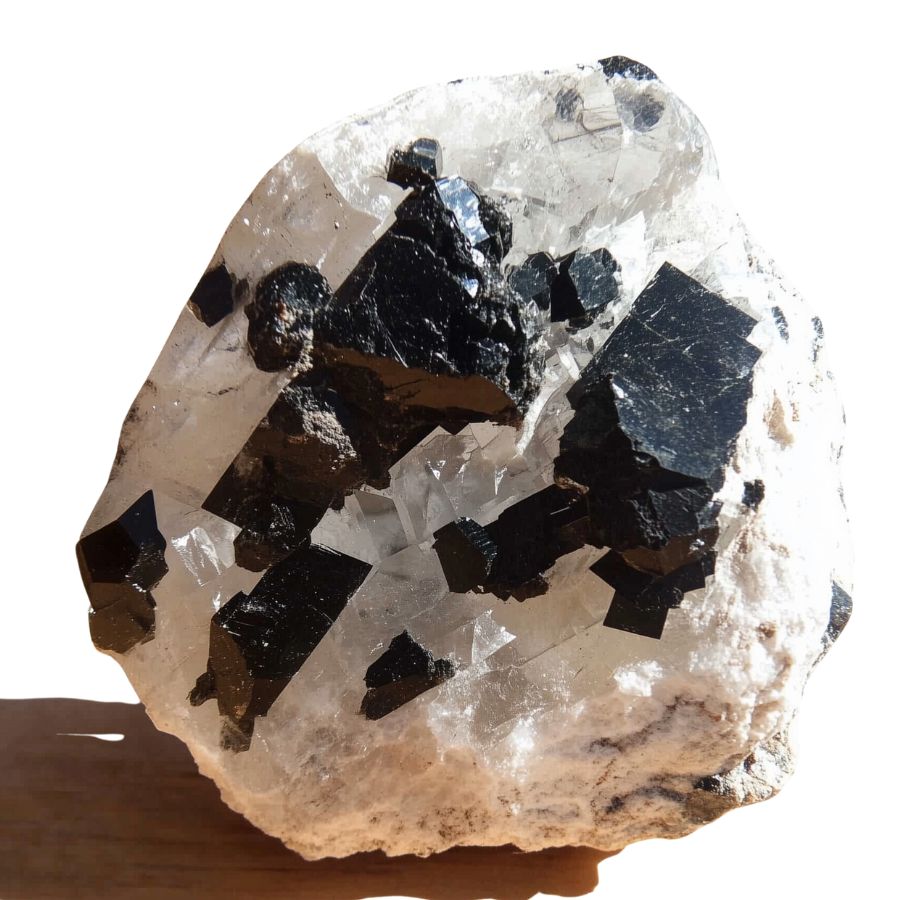
Tourmaline features distinctive crystal shapes, ranging from slender and elongated to chunky forms. Look for triangular cross-sections and striations on the surface, which indicate its unique growth patterns.
Check for Transparency
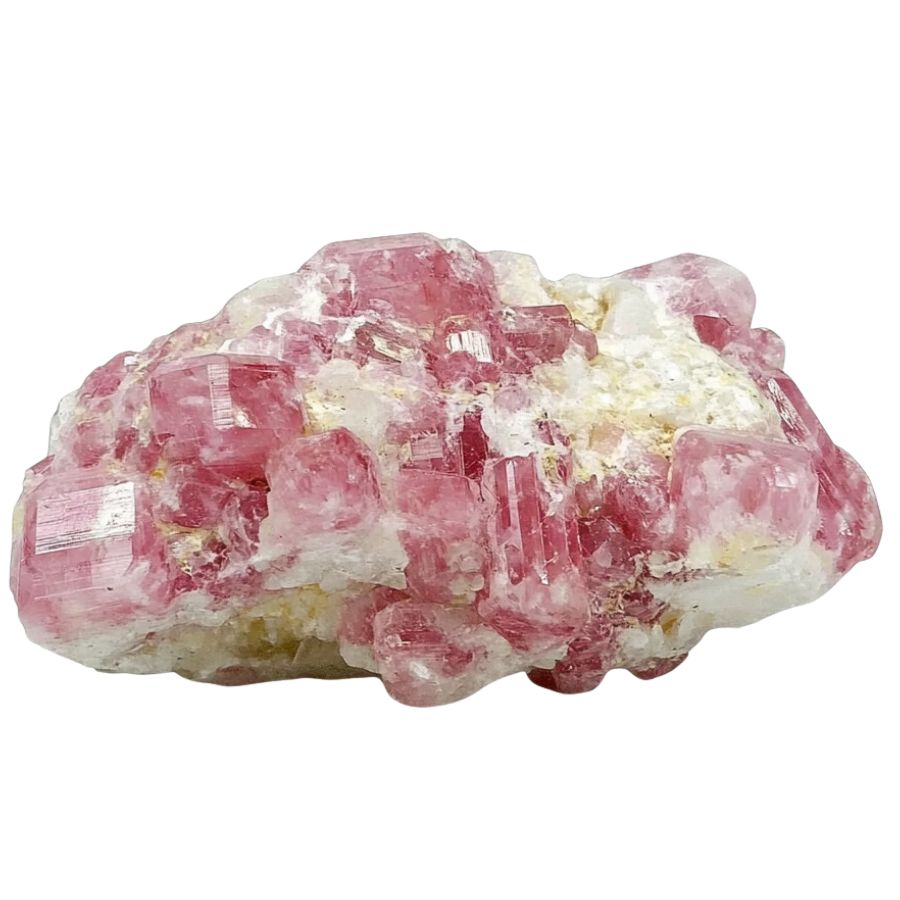
Some rough tourmaline can be slightly transparent. If you hold it up to the light, you might see through it a bit. This transparency can be a good sign that you have tourmaline.
A Quick Request About Collecting
Always Confirm Access and Collection Rules!
Before heading out to any of the locations on our list you need to confirm access requirements and collection rules for both public and private locations directly with the location. We haven’t personally verified every location and the access requirements and collection rules often change without notice.
Many of the locations we mention will not allow collecting but are still great places for those who love to find beautiful rocks and minerals in the wild without keeping them. We also can’t guarantee you will find anything in these locations since they are constantly changing.
Always get updated information directly from the source ahead of time to ensure responsible rockhounding. If you want even more current options it’s always a good idea to contact local rock and mineral clubs and groups
Tips on where to look
Once you get to the places we have listed below there are some things you should keep in mind when you’re searching:
Look for Sedimentary Rocks
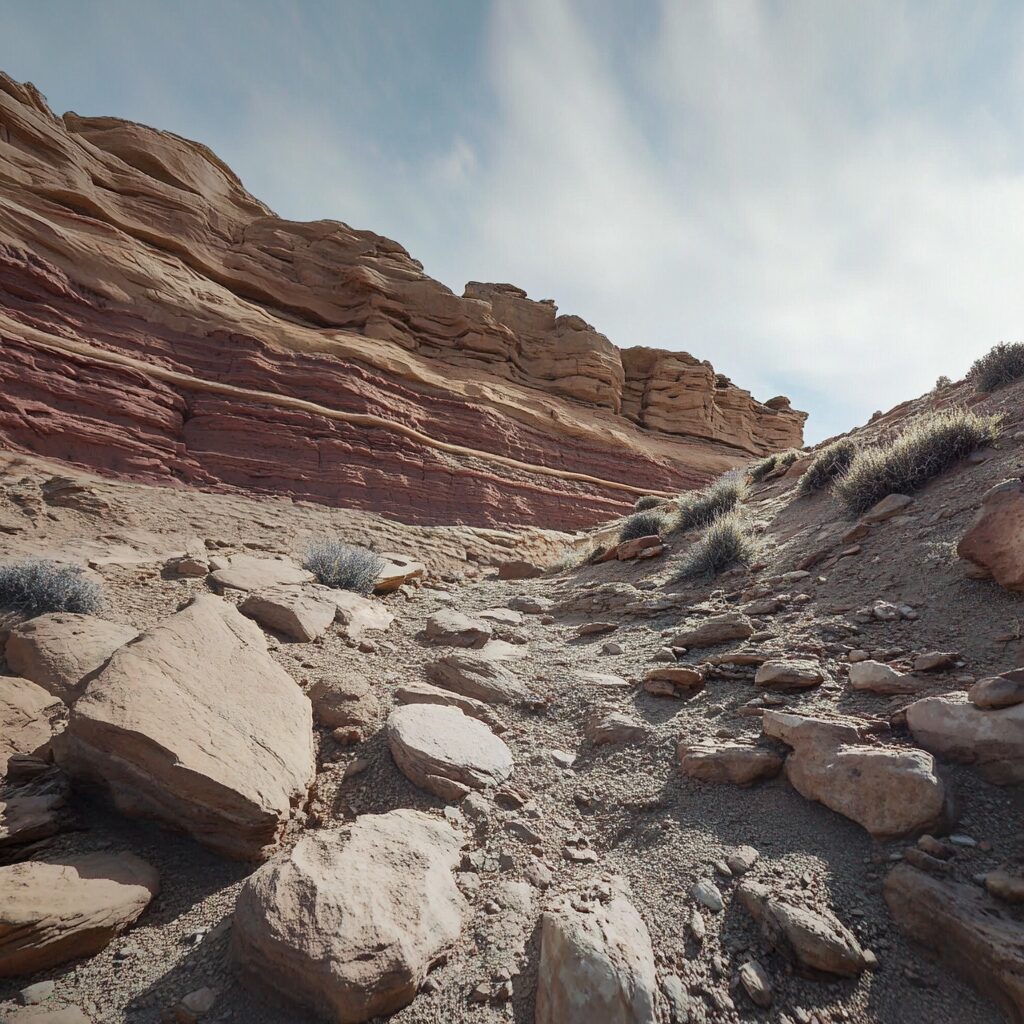
Sedimentary rocks are great places to find tourmaline. These rocks form from layers of sand, mud, and minerals. Over time, minerals like tourmaline can get trapped.
Look in riverbeds or areas where sediment has built up. You might find small pieces or even larger crystals.
Explore Mines
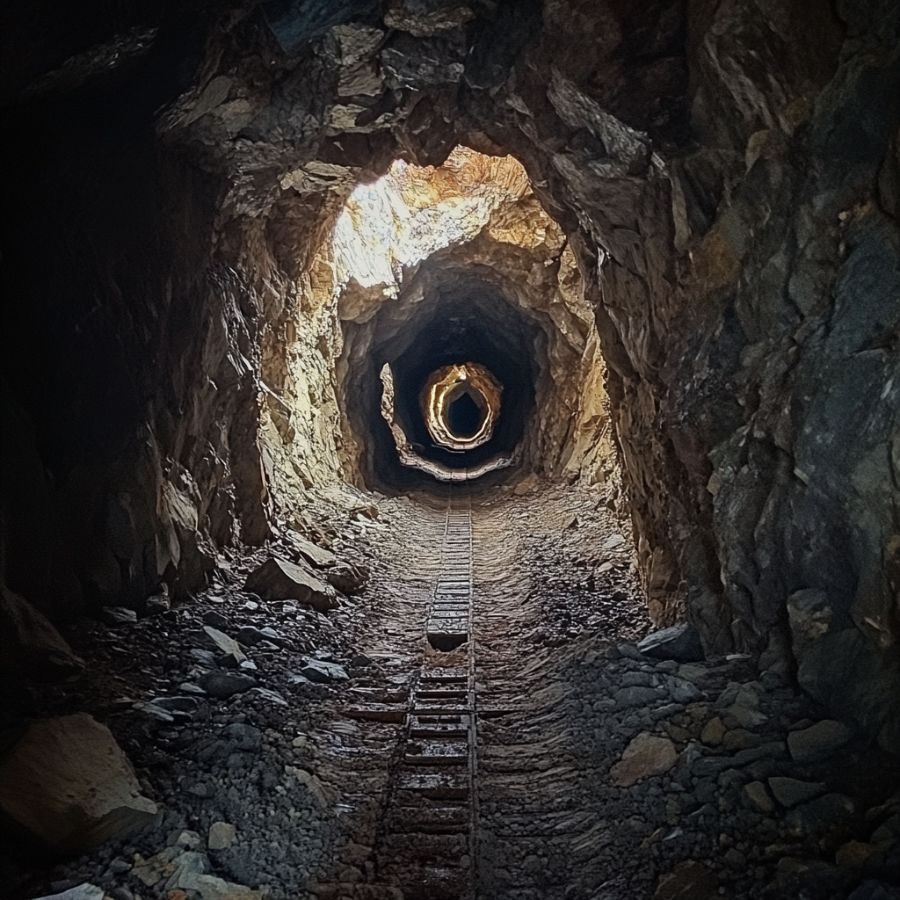
Mines are great spots to find tourmaline. Many mines across the U.S. extract various gemstones, including tourmaline.
Some mines even allow visitors to search for gems themselves. Always check if they have guided tours or special digging days.
Search in Gravel Pits

Gravel pits are often overlooked, but they can be treasure troves. These pits dig deep into the earth, exposing layers of rock.
Tourmaline can be found in the gravel. Just sift through the material carefully.
Some Great Places To Start
Here are some of the better places to start looking for tourmaline in Alabama:
Always Confirm Access and Collection Rules!
Before heading out to any of the locations on our list you need to confirm access requirements and collection rules for both public and private locations directly with the location. We haven’t personally verified every location and the access requirements and collection rules often change without notice.
Many of the locations we mention will not allow collecting but are still great places for those who love to find beautiful rocks and minerals in the wild without keeping them. We also can’t guarantee you will find anything in these locations since they are constantly changing.
Always get updated information directly from the source ahead of time to ensure responsible rockhounding. If you want even more current options it’s always a good idea to contact local rock and mineral clubs and groups
Gold Hill
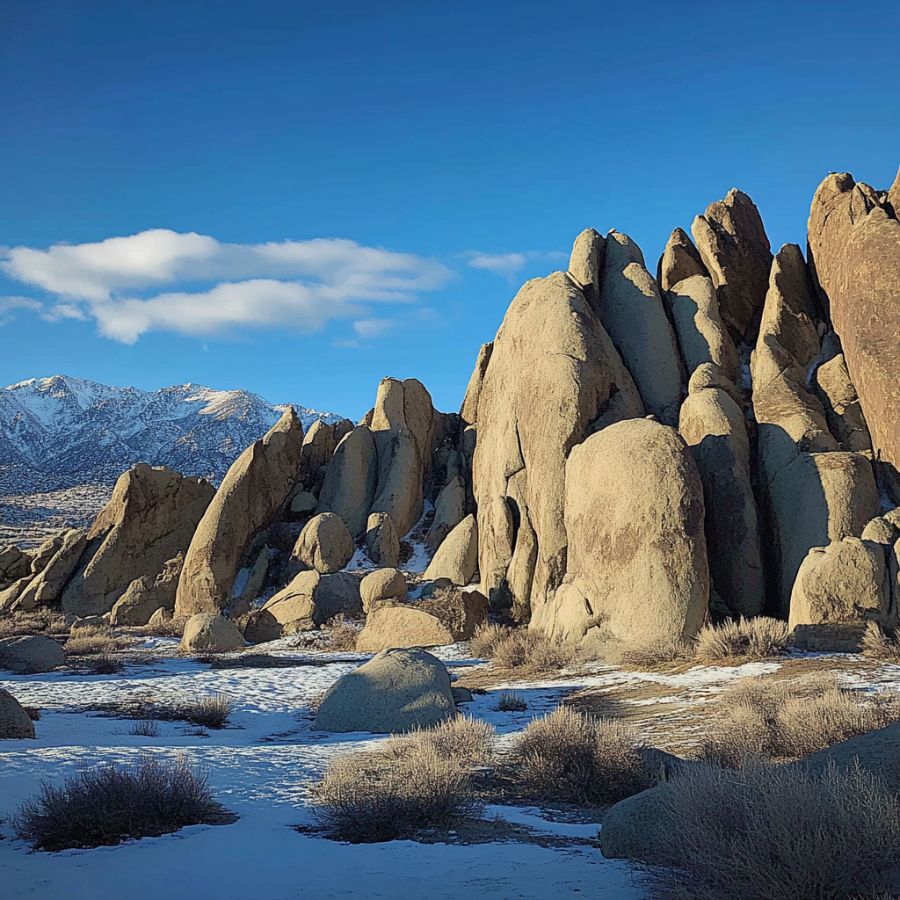
Gold Hill sits at an elevation of about 735 feet, offering a scenic backdrop for mineral enthusiasts. Once a bustling gold mining hub during the 1840s Alabama Gold Rush, Gold Hill now attracts gem hunters with its rich geological diversity.
The area’s metamorphic and igneous rock formations create an ideal environment for tourmaline formation. These colorful crystals are often found in pegmatite veins that crisscross the landscape.
Old mine workings and exposed outcrops provide excellent spots to search for these prized minerals.
While exploring, keep an eye out for other interesting finds like quartz and mica, which are common companions to tourmaline in this region.
The rural setting and historical significance of Gold Hill add an extra layer of adventure to your rockhounding experience, making it a must-visit location for gemstone enthusiasts in Alabama.
Blue Creek
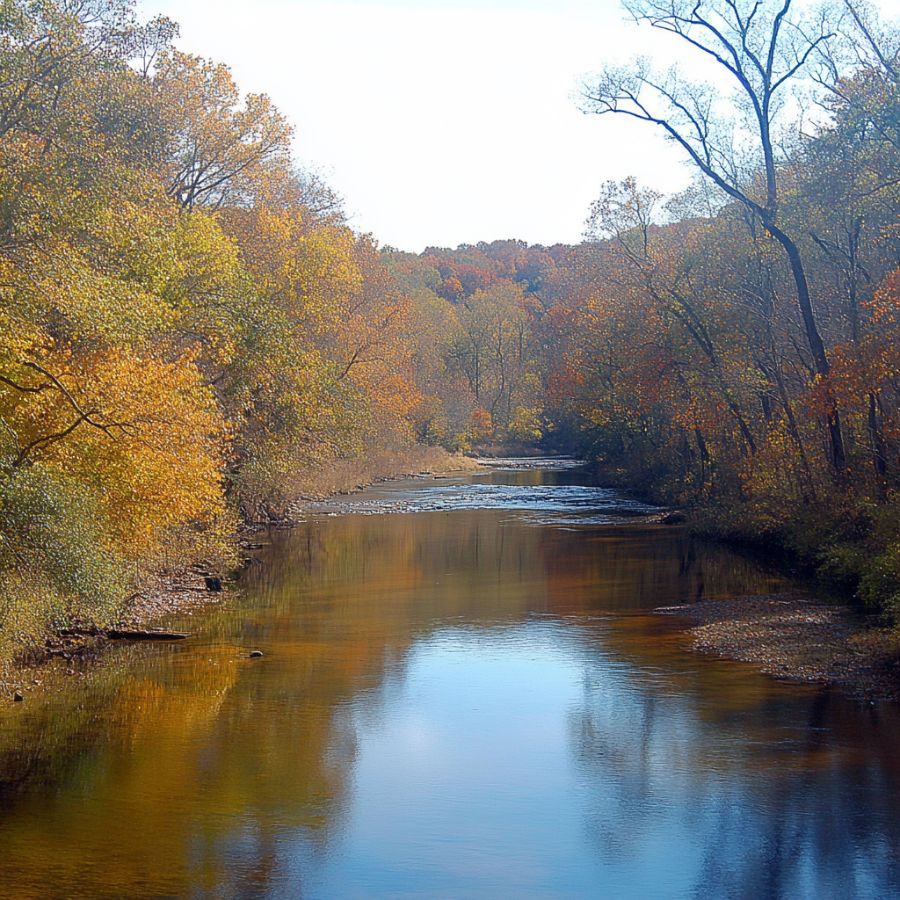
Blue Creek is a scenic stream, flowing through southern Alabama at an elevation of 312 feet. The creek’s banks are rich with diverse mineral formations, making it a prime spot for gemstone enthusiasts.
What makes Blue Creek special is its pegmatite veins, often loaded with colorful tourmaline crystals. These veins, formed millions of years ago, cut through the bedrock along the creek.
Eager rockhounds can explore the creek’s edges, carefully digging into exposed rock faces to uncover these prized stones. The area’s geological history has created perfect conditions for tourmaline formation.
As you search, you might also stumble upon other minerals typical of pegmatite deposits. Remember, the best finds often come after rainfall when the creek’s waters wash away sediment, revealing fresh rock surfaces.
Cheaha Mountain
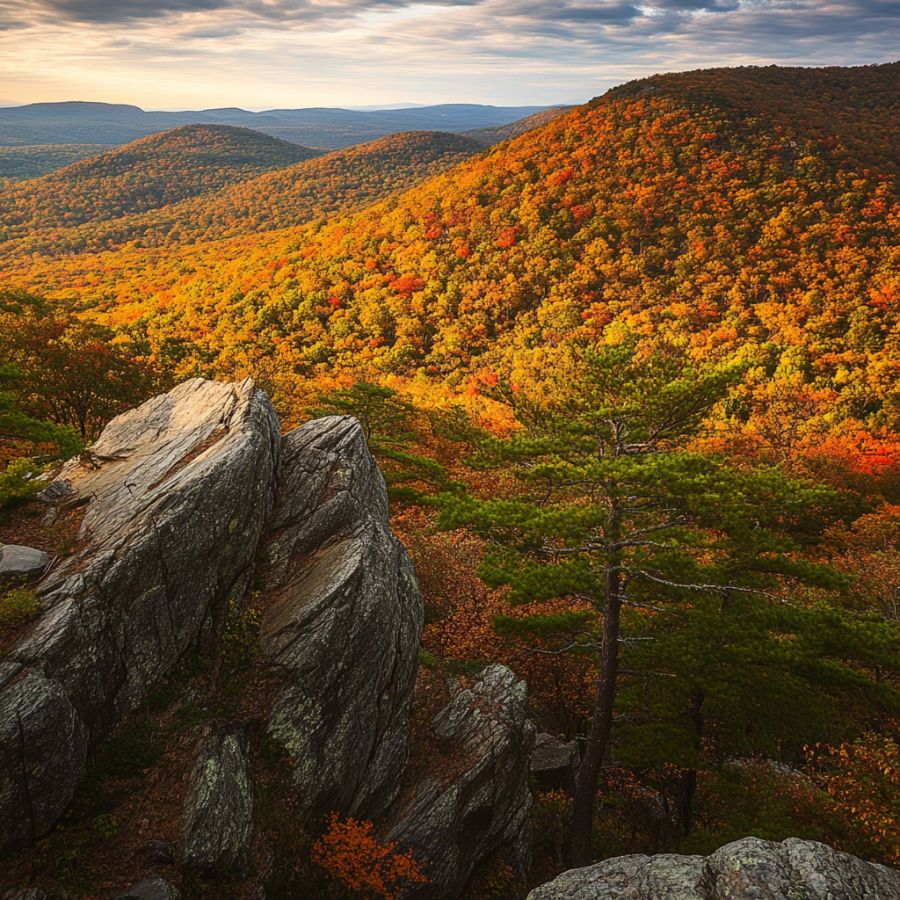
Cheaha Mountain stands as Alabama’s highest natural point at 2,413 feet. This gem-hunting paradise is part of the southernmost Appalachian Mountain chain, offering a unique geological playground for rockhounds.
The mountain’s unique geology, featuring ancient quartzite boulders and metamorphic plateaus, creates an ideal environment for tourmaline formation.
Explorers can focus their search near the quartzite cliffs and upper slopes, where mineral deposits are most abundant. The trails around the peak and Bald Rock offer promising starting points for your tourmaline hunt.
Beyond its geological wonders, Cheaha Mountain is known for its stunning vistas and wind-warped trees, making it a feast for both the eyes and the rock collection.
The area’s rich mineral diversity means you might stumble upon other fascinating stones while searching for tourmaline, adding an extra layer of excitement to your rockhounding adventure.
Doc Heard Prospect
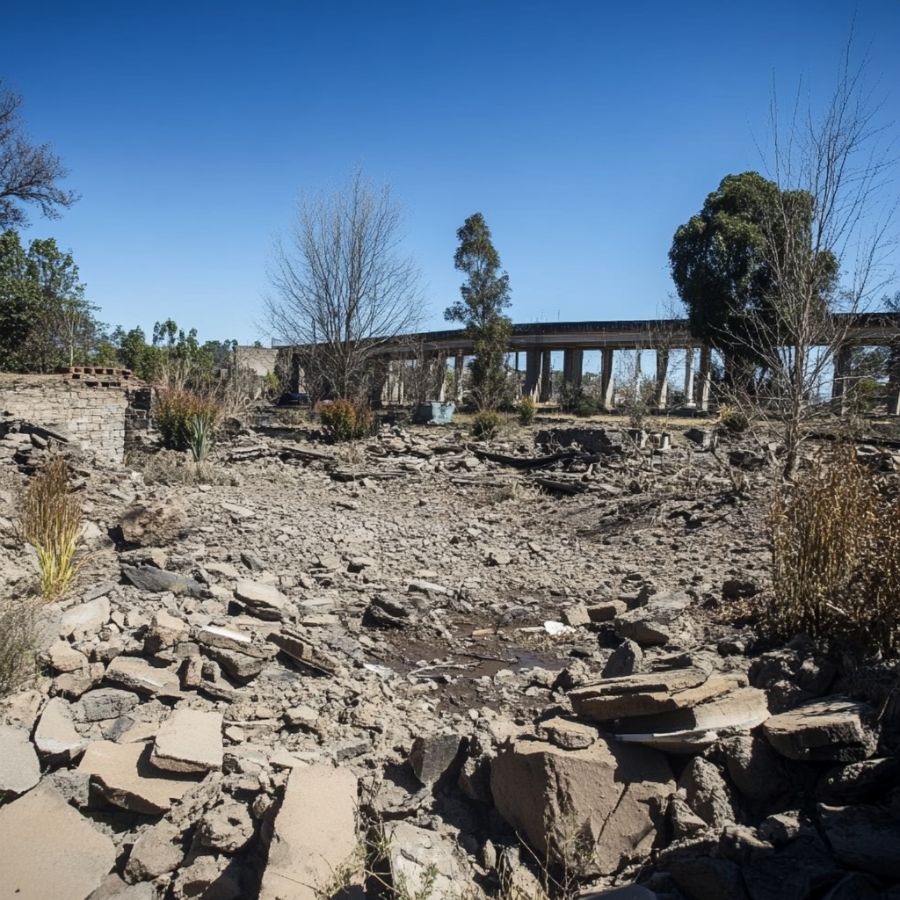
Located in the rolling hills of east-central Alabama, the Doc Heard Prospect in Tallapoosa County is a rockhound’s paradise. This former mica mine, located near Dadeville, has become a hotspot for tourmaline hunters.
The area’s rich pegmatite formations make it a geological treasure trove. These coarse-grained igneous rocks are known for hosting a variety of rare minerals, including the sought-after tourmaline.
Tourmaline crystals here are typically found embedded in pegmatite veins. The best spots to search are exposed pegmatite areas, particularly in old mine workings or natural outcrops.
The unique geological conditions of the Doc Heard Prospect, with its large crystal formations and diverse mineral content, create an ideal environment for tourmaline formation.
Lay Dam
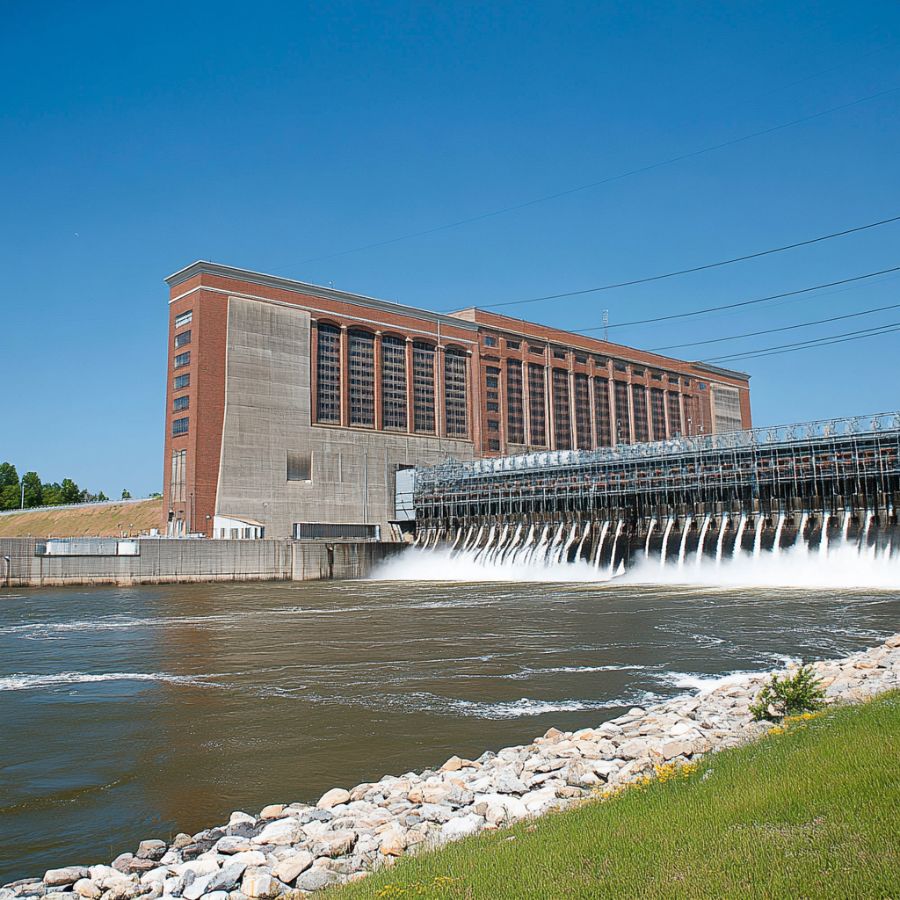
Along the Coosa River in central Alabama, Lay Dam is a hydroelectric dam that creates Lay Lake, spanning 12,000 acres with 289 miles of shoreline. It’s a treasure trove for gemstone enthusiasts, especially those seeking tourmaline.
The area’s geological diversity stems from its mix of sedimentary, metamorphic, and igneous formations. This unique blend creates ideal conditions for tourmaline formation.
Rockhounds often strike luck in the alluvial deposits along the riverbanks and the lake’s gravel beds.
Lay Dam’s run-of-the-river gravity system has minimally altered the natural landscape, preserving its mineral-rich environment. The water’s flow constantly exposes new deposits, making each visit potentially rewarding.
Places Tourmaline has been found by county
After discussing our top picks, we wanted to discuss the other places on our list. Below is a list of the additional locations where we have succeeded, along with a breakdown of each place by county.
| County | Location |
| Chambers | High Farm |
| Chambers | Oak Bowery area |
| Chambers | Waverly are road cuts and gravel pits |
| Chambers | Dirt Road in Lafayette area |
| Clay | Delta Mica Mine |
| Clay | J. J. Smith No. 1 Mine |
| Clay | J. J. Smith No. 2 prospect |
| Clay | Jones-Bunn prospect |
| Clay | Hodge Mica Mine |
| Clay | Shirley Prospects in Ashland area |
| Clay | Along the Road of Grabun in Erin area |
| Clay | Gold Mines Creek |
| Clay | Lineville area |
| Cleburne | First Woods Prospect |
| Cleburne | creeks and gravels of Micaville Area |
| Cleburne | Jim Flemming Mica Mine |
| Coosa | Moriah area |
| Coosa | Pond Mica Mine |
| Coosa | Two Bit Pegmatite |
| Coosa | Millsite Tin Mine |
| Montgomery | Montgomery District |
| Randolph | Arnott No. 2 Prospect |
| Randolph | Arnott Road Prospect |
| Randolphn | Great Southern No. 2 Mine |
| Randolph | J. J. New Mines |
| Randolph | Vickers No. 3 Prospect |
| Randolph | Old Ancient Mine |
| Randolph | Pat Ayers No. 1, 3 and 4 prospects |
| Randolph | Pearce Lenless Nos. 1, 2, 3 & 4 Prospects |
| Randolph | Arnott No. 1 Prospect |
| Randolph | Great Southern No. 1 and 4 Mica Mine |
| Randolph | Haynes No. 2 Muscovite Mine |
| Randolph | Indian Mine |
| Randolph | J. B. Motes mica prospects |
| Randolph | J. J. New No. 5 and 6 prospect |
| Randolph | J. P. Holmes mica prospect |
| Randolph | Jones Mica Prospect |
| Randolph | Jones No. 1 Mica Mine |
| Randolph | Liberty Mica Mine |
| Randolph | Pinetucky No. 2 Mica Mine |
| Randolph | Vickers No. 1 and 4 Mines |

